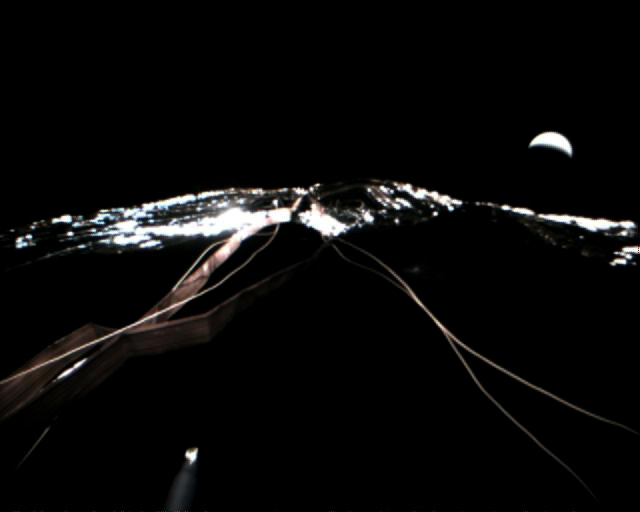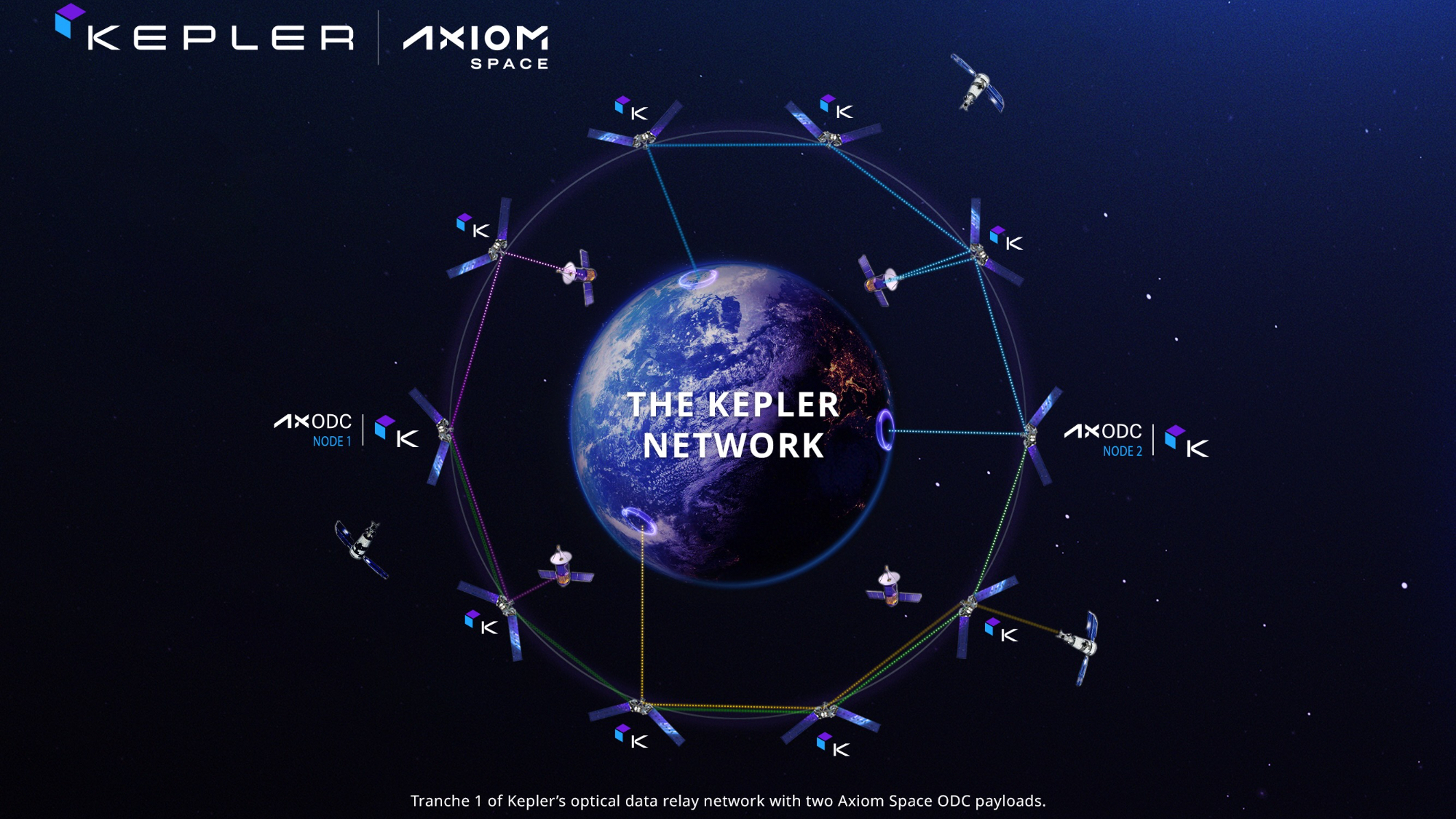New LightSail 2 Spacecraft Will Boost Solar-Sailing Interplanetary Missions
A new solar-sailing spacecraft will be a call to all (future) occupants of interplanetary craft. The Planetary Society's LightSail 2 spacecraft will be a test bed for future missions wanting to use solar sails — including NASA's proposed cubesat, the Near-Earth Asteroid Scout (NEA Scout).
LightSail 2 will launch no earlier than June 13 from the Kennedy Space Center near Orlando, Florida, using SpaceX's new and powerful Falcon Heavy rocket. The spacecraft's ultimate destination will be medium-Earth orbit of about 725 kilometers (450 miles) — roughly double the altitude of the International Space Station.
The mission's ultimate goal is to test out "flight by light," as The Planetary Society calls it — solar sailing in space. This type of propulsion uses the gentle push of photons streaming from the sun to move the spacecraft around. The greatest benefit is that the spacecraft doesn't have to carry fuel with it. On a small satellite like a cubesat, said Bruce Betts, chief scientist of The Planetary Society, every gram of weight counts. [The Evolution of Solar Sails in Photos]
"We've been waiting for a launch where we could get to a higher altitude [above Earth], where solar pressure will dominate over the atmospheric drag," Betts told Space.com.
"We actually will be trying to do controlled solar sailing … every half an [Earth] orbit, we will be pushed by the sunlight, and for the other half of the orbit, we will be edge-on to the sunlight," added Betts, who is also The Planetary Society's director of science and technology.
Improvements from LightSail 1

The Planetary Society's LightSail 1 launched on May 20, 2015, along with the Air Force's supersecret X-37B space plane. It survived for just under a month in low Earth orbit. While it met its major mission objective of deploying the sail, the test flight had several issues along the way.
Just two days after launch, a software glitch delayed plans to deploy the solar sail until June 7. The spacecraft transmitted an image June 9 showing that the sail unfurled successfully, meeting its primary mission objective. But then, more problems arose.
Get the Space.com Newsletter
Breaking space news, the latest updates on rocket launches, skywatching events and more!
"Before engineers could get a picture from the opposite-side cameras, LightSail's radio began transmitting a continuous, nonsensical signal, and the spacecraft stopped responding to commands," said the Planetary Society's Jason Davis in a blog post on June 15, 2015. The spacecraft also stopped transmitting on June 10, shortly before it entered the atmosphere as originally planned.
"We learned a lot from LightSail 1," Betts said. "It taught us a lot about the spacecraft, and after the various issues, we made a lot of improvements."

Some of the key improvements will help LightSail 2 make more efficient use of the particles coming its way. The most dramatic hardware difference is a momentum wheel, or a rapidly spinning wheel that helps LightSail 2 maintain position in space. Its attitude determination and control software is different from LightSail 1's equipment. The cameras were also upgraded to transmit higher-quality images of the sails.
Other improvements were intended to make the spacecraft more robust. Instead of "waiting for reboots to sometime, magically happen," Betts said, there are timers on board with automatic settings to restart processes, or, at worst, to reboot the entire spacecraft in case of trouble. More information will be included in the radio signal to give controllers information about the spacecraft's health status. Engineers also added reflectors to make the position of LightSail 2 easier to track from the ground.
Interplanetary craft

A couple of other spacecraft have successfully tested out solar sailing in space. The most notable example is the Japanese Ikaros (Interplanetary Kite-craft Accelerated by Radiation Of the Sun), which successfully traveled using a solar sail in 2010 during Japan's Akatsuki mission to Venus. It's the only spacecraft that uses that method to move so far in deep space — in 2012, Ikaros received the Guinness World Record as the first solar sail spacecraft between planets. [Are Solar Sails the Future of Space Travel?]
NASA also deployed a solar sail on the NanoSail-D2 in low Earth orbit in 2010 as well; that mission focused more on the sail's deployment, and how the sail behaved in low Earth orbit. (The agency planned another solar-sailing mission called Sunjammer, but it was canceled before launch.)

This means LightSail 2 will add vitally needed, real-world information about how solar sails behave in space. Its team is in contact with another solar sail experimental team as well: the NEA Scout team, which will use a solar sail to fly by an asteroid. "They are planning on using a solar sail with similar type design and characteristics to LightSail 2," Betts said.
NEA Scout is scheduled to join a dozen other tiny missions aboard the Orion's Exploration Mission-1, which will also be the first test flight of NASA's Space Launch System and is currently scheduled for no earlier than 2019. NEA Scout is expected to fly past an asteroid called 1991 VG, although the decision to fly by the asteroid hasn't been finalized yet.
Solar sailing is a possible propulsion method for distant-future interstellar missions because fuel doesn't need to be carried on board. NASA has played around with various mission-concept ideas. Similarly, the privately funded Breakthrough Starshot initiative plans to use a laser in combination with a sail to send a tiny probe to Earth's nearest star system, Alpha Centauri.
Editor's Note: This article has been corrected to note that LightSail 2 is propelled using photons streaming from the sun, not charged particles in the solar wind.
Follow us @Spacedotcom, Facebook and Google+. Original article on Space.com.
Join our Space Forums to keep talking space on the latest missions, night sky and more! And if you have a news tip, correction or comment, let us know at: community@space.com.

Elizabeth Howell (she/her), Ph.D., was a staff writer in the spaceflight channel between 2022 and 2024 specializing in Canadian space news. She was contributing writer for Space.com for 10 years from 2012 to 2024. Elizabeth's reporting includes multiple exclusives with the White House, leading world coverage about a lost-and-found space tomato on the International Space Station, witnessing five human spaceflight launches on two continents, flying parabolic, working inside a spacesuit, and participating in a simulated Mars mission. Her latest book, "Why Am I Taller?" (ECW Press, 2022) is co-written with astronaut Dave Williams.









